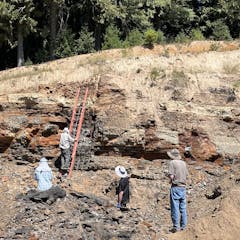
Artikel-artikel mengenai Mars
Menampilkan 1 - 20 dari 283 artikel

Future space missions will fly farther and longer than ever before – which means crew members may need more involved medical care in space.

Aquaponics could help feed Martian colonies in the future and offer a sustainable food system on Earth.

Studying the water cycle on Mars is essential for assessing its potential habitability, and a new study reveals that significant quantities are present as transient frost on mountain peaks.

New ideas will be key to making the mission happen after a report criticised its timescale and cost.

It’s not easy to collect rocks on a budget when the rocks are 140 million miles away.

The Perseverance rover has arrived at what’s thought to be an ancient shoreline on Mars.

There’s anxiety among space scientists following Nasa’s decision to rethink sample return mission from Mars.

Deep-sea sediments show how the changing orbits of Earth and Mars are linked to past global warming and the speeding up of deep-ocean eddies.

Determining whether or not life exists on another planet is an extraordinarily complicated – and expensive – scientific endeavor.

The next generation of spacesuit needs to do more than simply protect an astronaut from the vacuum of space.

Can astronauts spend prolonged time in close quarters millions of miles from Earth without killing each other?

While NASA rovers on the surface of Mars look for hints of life, researchers back on Earth are studying ‘echoes of life’ from ancient basins – hoping that the two sites might be similar.

Mars has been a popular destination since space exploration began – and there are plenty of people who’d love to go there.

Among the missions being planned is a huge helicopter drone to explore Saturn’s moon Titan.

In sci-fi depictions, extraterrestrial habitats have evolved tandem with scientific understanding of conditions on planets

You might hate winter, but at least you know what to expect every year. Other planets have wobbly axes that lead to wild, unpredictable seasons.

Moons and asteroids will be visited by spacecraft from Earth next year.

A Japanese spacecraft is expected to reach Martian orbit in 2025 to collect material from the surface of the moon Phobos before returning to Earth by 2029.

Some space rocks you can get for free – if you know how to identify them. Rarer materials cost more, and the asteroid sample NASA just brought back has a high price tag.

Control experiments are critical in informing the search for alien life.
